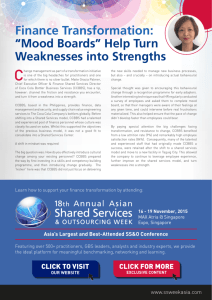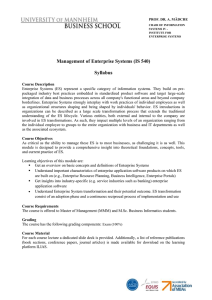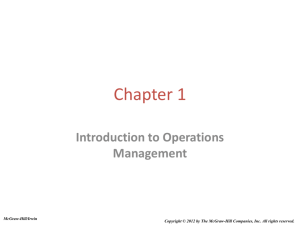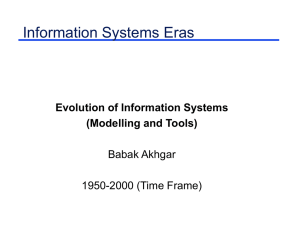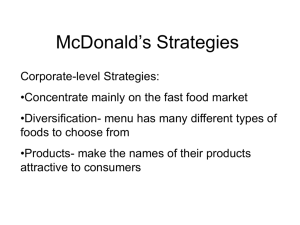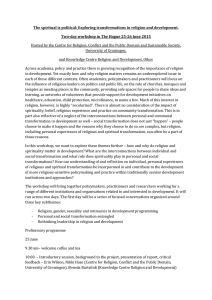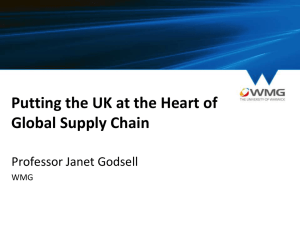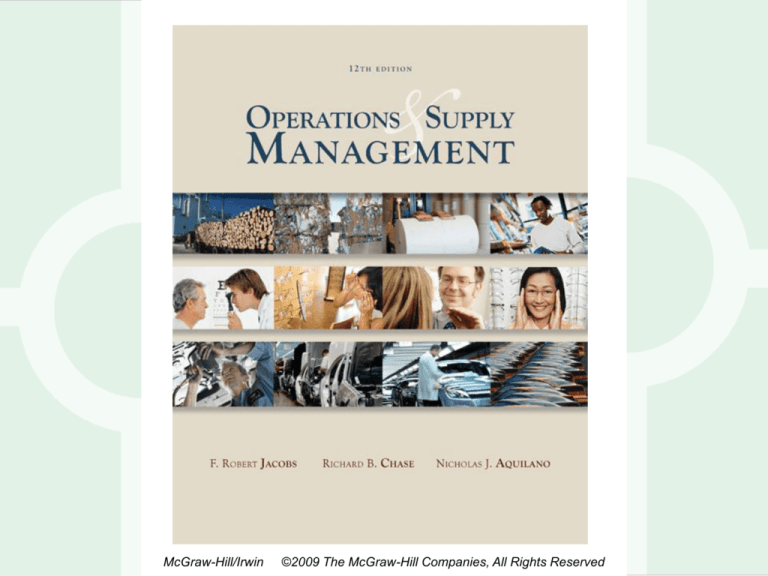
1
•
McGraw-Hill/Irwin
©2009 The McGraw-Hill Companies, All Rights Reserved
1-1
2
Chapter 1
Introduction to the Field
1-2
3
What is Operations and Supply Management?
Operations and Supply
Management (OM) is defined
as the design, operation, and
improvement of the systems
that create and deliver the
firm’s primary products and
services
1-3
4
Why Study Operations Management?
Systematic Approach
to Org. Processes
Business Education
Operations
Management
Career Opportunities
Cross-Functional
Applications
1-4
5
What is a Transformation Process?
Defined
Input
Transformation
Process
Output
(Value Adding)
A transformation process is
defined as a user of resources to
transform inputs into some
desired outputs
1-5 6
6
Transformations
• Physical--manufacturing
• Locational--transportation
• Exchange--retailing
• Storage--warehousing
• Physiological--health care
• Informational--telecommunications
1-6
7
Operations and Supply Management
Supply Chain Processes
Sourcing
Processes
Manufacturing
Processes
Logistics
Processes
Logistics
Processes
Distribution
Processes
Service
Processes
1-7
8
What is a Service and What is a Good?
• “If you drop it on your foot, it
won’t hurt you.” (Good or
service?)
• “Services never include goods
and goods never include
services.” (True or false?)
1-8
9
What about McDonald’s?
• Service or Manufacturing?
• The company certainly
manufactures tangible products
• Why then would we consider
McDonald’s a service business?
1-9 9
10
Front and Back Office
Back Office
Service Provider
Front Office
Customer
1-1010
11
The Goods-Services Continuum
1-11
12
Core “Factory Services”
• Quality
• Flexibility
• Speed
• Price (or production cost)
1-1211
13
Value-Added Factory Services
• Information
• Problem Solving
• Sales Support
• Field Support
1-1312
14
Development of OM as a Field
Scientific
Management
Computers
(MRP)
TQM & Quality
Certification
Moving Assembly
Line
JIT/TQC &
Automation
Business Process
Reengineering
Hawthorne
Studies
Manufacturing
Strategy
Electronic
Enterprise
Operations
Research
Service Quality
and Productivity
Global Supply
Chain Mgmt.
Historical
Underpinnings
OM's Emergence
as a Field
1-1413
15
Current Issues in OM
• Coordinate the relationships between
mutually supportive but separate
organizations.
• Developing flexible production systems to
enable mass customization of products
and services.
• Optimizing global supplier, production,
and distribution networks.
1-15
16
Current Issues in OM (cont’d)
• Increased co-production of goods and
services
• Managing the customers experience
during the service encounter
• Raising the awareness of operations
as a significant competitive weapon
1-16



